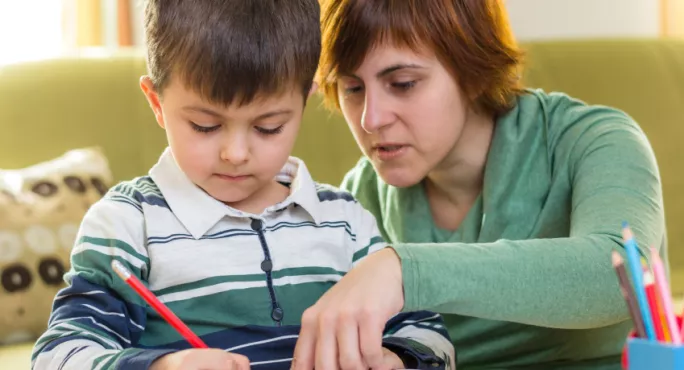“Why are you doing it that way? That’s not how I learnt it.”
The mother takes the pencil from her child and starts scribbling her working out onto the homework sheet. The child watches in confusion. This doesn’t look anything like the method that Miss showed them on the board…
For Tom Harbour, this scenario was all too familiar. He was a teacher working in a deprived area of Leicester, in which 85 per cent of parents spoke Gujarati as their first language.
When attempting to explain to parents what their children were learning in class, the language barrier was only part of the problem for Harbour. He also noticed that many parents had been taught maths using completely different methods to those used in primary classrooms today.
This meant that parents were either not confident enough to help their children with their homework, or they were helping in a way that conflicted with what Harbour was trying to teach.
“As a teacher, you always have so many other things to do that making time to communicate properly with parents can be really hard,” he says. “It can be frustrating, but it really is important.”
Homework help or hindrance?
Michelle Doyle Wildman, policy and communications director at PTA UK, agrees that it is important for schools to dispel any misunderstandings.
“PTA UK’s annual parents survey found that 91 per cent of parents were actively supporting their child’s learning at home. Parents having a full understanding of the curriculum, however, is another matter - especially since academies and free schools are not required to follow the national curriculum,” she says.
“Anecdotally, the approach to the teaching of mathematics appears to be not as well understood by parents compared with reading and writing,” Wildman adds.
Harbour’s solution was to provide parents with resources that would help. He started showing them videos on YouTube that explained the maths concepts he was teaching.
“The only parental engagement that really matters is what they do at home in a hands-on way,” he says. “And it’s not enough to know the methods; they also need to understand the kind of activities teachers use.”
Then, in 2015, Harbour launched Maths with Parents, which offers video explanations of primary maths topics, along with resources to help parents support their children in ways that don’t contradict what they are learning at school.
“They get a two-minute video and two games for each topic,” Harbour says. “One game will typically be something competitive, and one is more related to the real world, drawing on activities like shopping or cooking. We want to encourage parents to notice maths all around the world.”
For schools, there is the added benefit of access to data on parental engagement, based on whether the videos are being viewed. This information can be filtered by different target groups, to show where further intervention might be necessary.
Of course, many schools are already doing good work in reaching out to parents and helping them to engage with their children’s learning.
“Parents of our youngest school children tell us about teachers making very positive efforts to engage parents on what is being taught in class. It is not uncommon for schools to put on, for example, special sessions to run through phonics,” Doyle Wildman says.
But, Harbour believes, there is always room for improvement. He left teaching in July to focus on developing the resource and is already planning to expand it to cover literacy topics, too. The existing website is just the first iteration of what he hopes will become a much more extensive resource in the future.
Schools can currently register for free, although there is a licence fee to use the full product. 24 schools are already using the resource.
To find out more or to register your school, visit Maths with Parents or follow @ParentMaths on Twitter.




